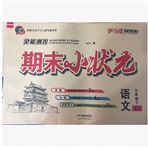|
阅读理解
ISC(HS)Reference No.S006864 New South Wales
Student Date of Birth:19/08/1988 Department of Education and Training
International Students Centre
Hong Xue 827-839 George Street PO Box 707
60 Waratah Street Broadway NSW 21007
Croydon Park NSW 2133 Phone:(612)9217 4801 1300 302 456
Fax:(612)9212 6721
http://www.tafensw.edu.au/international/
WARNING LETTER
Dear Hong Xue,
As you are aware, your student visa regulations set out a number of conditions applying to your visa.It has come to our attention that you are failing to meet the following conditions:You must maintain accommodation, support and general welfare arrangements that have been approved by your education provider if you:
●have not turned 18; and
●are not staying in Australia with:
-a parent
-a custodian(监护人); or
-a relative who has been nominated(指定)by your parent or a custodian, is aged at least 21 and is of good character.
Note:You must not change those arrangements without the written approval of your education provider.
You must obey the following rules:
1.During term time you must:
a)remain in your homestay during the school term;
b)come home every night; and
c)inform your guardian at all times of your whereabouts.
2.On weekends you must:
a)have your guardian's permission to stay with friends; and
b)inform your guardian of the name, address and phone numbers of people you are visiting.
3.You must return your guardian's telephone calls.
This will be your only warning.If you continue to breach(违反)your student visa regulations we will report you to the Department of Immigration and Multicultural and Indigenous Affairs.Such action may lead to the cancellation(取消)of your student visa.Please contact me on(612)9217 4801 or fax(612)9212 6721 if you have questions about your enrolment.
Yours sincerely
Tracey Carlon
Student Advisor
International Students Centre
NSW Department of Education and Training
| 
 全能测控期末小状元系列答案
全能测控期末小状元系列答案